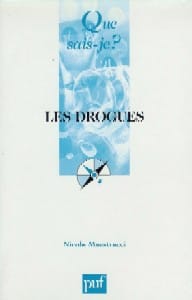What immediately strikes Nicole Maestracci in her introduction to the “Que sais-je?” on “Drugs,” is the “contrast between the extreme triviality of these human desires” which, according to her, provide as many motivations for consumption and the “dramatizing vocabulary used to describe the problems posed by consumption.”
Between the forbidden, moral or legislative, at the heart of desire and the denial of confronting these everyday vicissitudes seen as unbearable by an increasing number of humans, the temptation to take drugs finds multiple cracks to seep through. Desire, says the Magistrate? Yes, most likely, but which one? What “desire,” for example, can bring together the two million young Iranians who use drugs in the Islamic Republic? Should we see this as a consequence of the 40% of the population living below the poverty line and an unemployment rate affecting more than 20% of youth, a large part of them university graduates? What about the strong Western consumption of Cannabis, the substance notably the most experimented in France: 5 out of ten girls and 56% of the male adolescent population, that is more than half of the 17-18 year olds? What connection should we still see with the substantial increase in drug use among corporate executives, as recently revealed by Le Figaro in its May 3, 2006 edition?
Unemployed young Iranians, the crisis of adolescence characterized by the multiplication of risk-taking, European executives driven by a sharp concern for performance and control, are they not all, in one way or another, entangled in a struggle with reality?
Beyond the affective deficiencies and identity deficits that point at the individual as actual risk factors, the environment, reminds us the author of the “Que sais-je?”, also counts a lot in their decision to consume. The personal history of the subject, his family relationships, his social prospects define various behaviors towards drugs capable of distinguishing today’s use, harmful use, and dependence. Contrary to cocaine, ecstasy, or high doses of alcohol, the neurotoxicity, the risk of neuron destruction, is not demonstrated in cannabis, explains Nicole Maestracci. It does not lead to any physical dependence like that of opiates, the various products resulting from the cultivation of the poppy. Its true danger lies rather in the fact that it delays the confrontation with reality. In line with adolescent hesitations, it pushes back the moment of transition to adulthood, a phenomenon all the more worrying when its use is associated with that of alcohol, significantly raising the potential dangers of the two drugs in terms of road safety, violent behaviors, and risky sexual behavior. Experts remain divided on the subject of its prohibition. Some note that the level of consumption among young Dutch people, who are allowed to buy less than 5g of cannabis, remains one of the lowest in Europe. Others recall the necessity of prohibition (yet a source of pleasure) and its structuring effects on the pubertal cataclysm. If the level of experimentation doubled between 1993 and 1999, let us note with the French Office for Drugs and Drug Addiction, that this trend reversed and stabilized in France as in other European countries (Finland, Italy, Norway, the Netherlands, and Sweden) from 2002 on.
Nicole Maestracci, “Que Sais-je?” No. 1514, Drugs, PUF, 1st edition 2005.
Jean-Luc Vannier
Psychoanalyst
Jlvannier@free.fr
06 16 52 55 20


